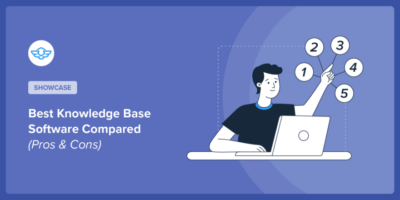Integrating ChatGPT with Your Knowledge Base and Self‑Service Portal
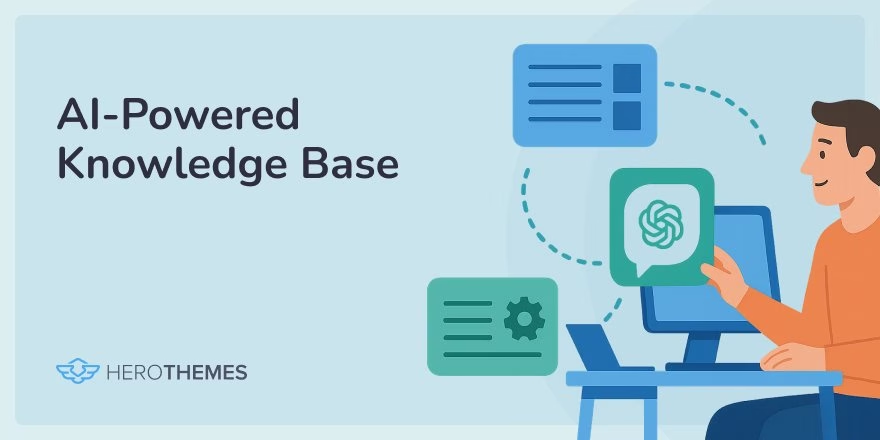
Thanks to simple ChatGPT integration, you can turn your knowledge base or self-service portal into an interactive support agent that’s always on duty.
And no, this guide is not about replacing your team or compromising support quality and losing revenue with baseless AI answers.
It’s about giving customers and employees a faster, smarter way to get answers, while giving accurate answers based on your very own inputs or content.
To make this possible you don’t have to learn new coding skills or hire a developer. Just a simple plugin installation and that’s it!
Now, let’s start integrating ChatGPT with your knowledge base to improve your customer experience and that is without compromising quality.
Why Combine ChatGPT with Your Knowledge Base? (Benefits)
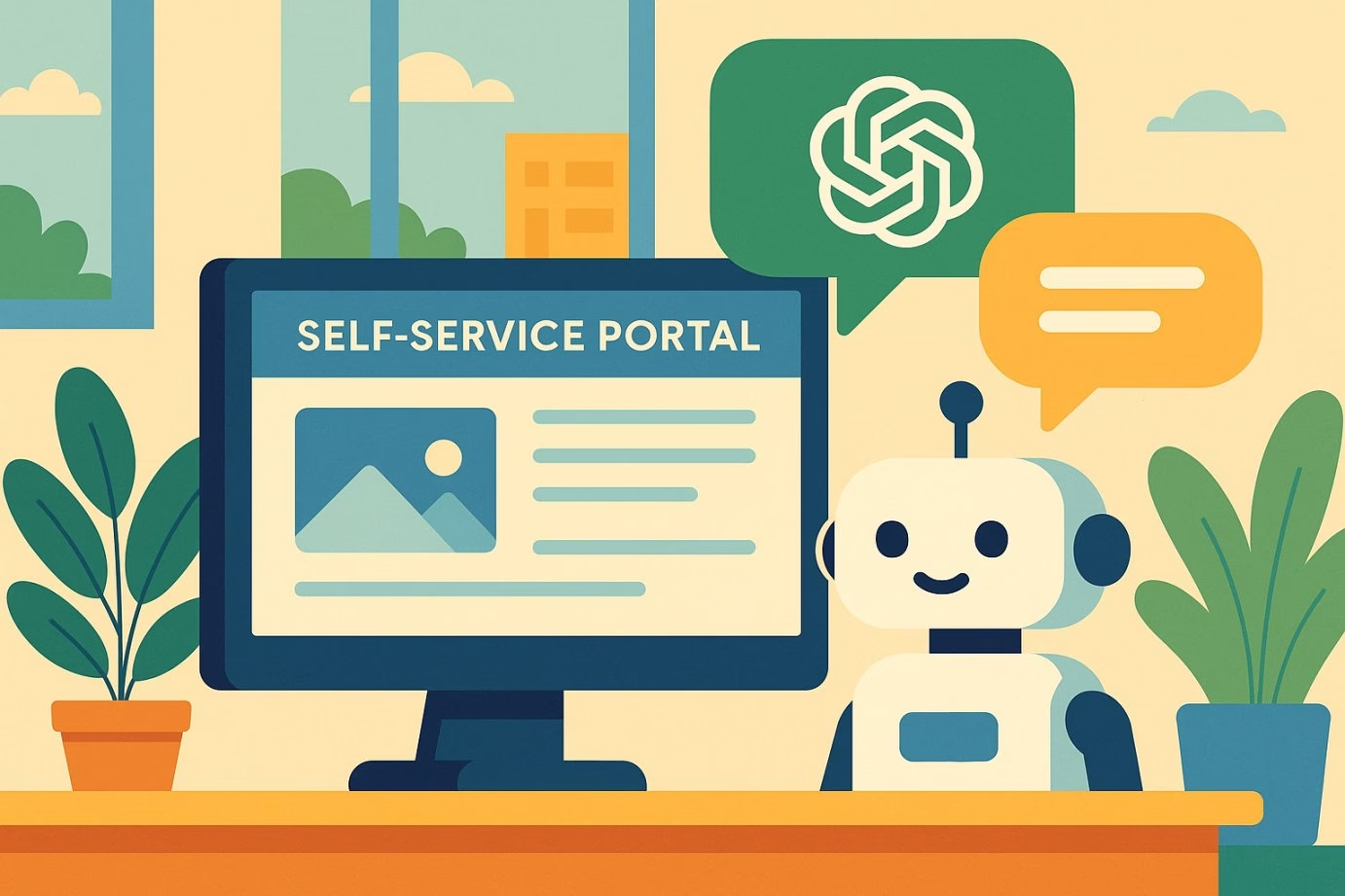
Before we dive into the how, let’s clarify the why, and exactly what I mean by integrating ChatGPT with your knowledge base or self-service portal.
Essentially, I’m talking about creating an AI-powered chatbot or assistant that draws information from your company’s own knowledge resources (help center articles, product documentation, FAQs, internal wikis, etc.) to answer questions.
Unlike a generic chatbot that only knows what’s on the internet (and may hallucinate incorrect answers about your product), this AI assistant is trained on your content – it knows your specific policies, guides, and terminology and uses that to answer users’ queries.
In other words, it’s a custom ChatGPT brain that’s been fed your knowledge base.
Here are some main benefits of integrating ChatGPT with your knowledge base:
1. Better Search and Answers
With an AI chatbot integrated into your help center, customers can simply ask a question: “How do I change my plan?”, and get an instant, context-rich answer drawn from your knowledge base.
No need to go through pages, no waiting for Monday morning support hours, or using an old-fashioned search bar that always returns different topics.
It’s the ultimate convenience for the user, and it satisfies that desire for quick self-service that so many customers have today.
On the internal knowledge base side (think company wikis, procedure manuals, employee FAQs), the benefits are similar.
Employees can get information faster, whether it’s HR policies or engineering procedures, by asking an AI that’s read the company handbook.
This can break down silos and speed up onboarding since folks don’t have to know who to ask, they just ask the portal.
2. Consistent Accuracy, Privacy, and tone
An AI is only as good as the information it’s given and the rules it’s guided by.
That’s why it’s important to integrate ChatGPT in a controlled way: feed it verified, up-to-date knowledge base articles (not random forum posts), and ideally have a fallback for when it’s unsure.
For example, Heroic Knowledge Base AI assistant is designed to hand off to a human agent or support form if it can’t resolve the query, rather than spouting nonsense.
And OpenAI’s latest enterprise features even allow for connectors that only search your private data (so nothing leaves your environment).
Alright, let’s get practical. How can you implement this?
How to Integrate ChatGPT with Your Knowledge Base (No-Code)
If your knowledge base runs on a popular platform like WordPress, the easiest way to add ChatGPT is to leverage a plugin that’s already figured it out for you.
Check out this guide to learn how to create your own WordPress-based knowledge base system.
The Heroic Knowledge Base (Heroic KB) plugin. A leading WordPress knowledge base solution that comes with a built-in AI Help Assistant (chatbot) powered by ChatGPT.
It essentially lets you create a custom chatbot in minutes, with just a few clicks, trained on your existing knowledge base content.
No hiring developers, no writing code.
So how does it work in practice?
Step 1: Install and Activate Heroic Knowledge Base Plugin
You are basically creating a new knowledge base portal with WordPress, and Heroic Knowledge Base.
You can easily import your old knowledge base data into a new site, and get started with AI integration within an hour.
And if you are thinking about features and pricing. There is no shortage of options, and it can cost 2-3x less ($67/year for essential plan) than a SaaS knowledge base platform.
You get features such as:
- User restriction for internal portal
- Multilingual support
- Multiple layouts and customization options
- Feedback and reports
- Advanced search
- And of course, AI integration.
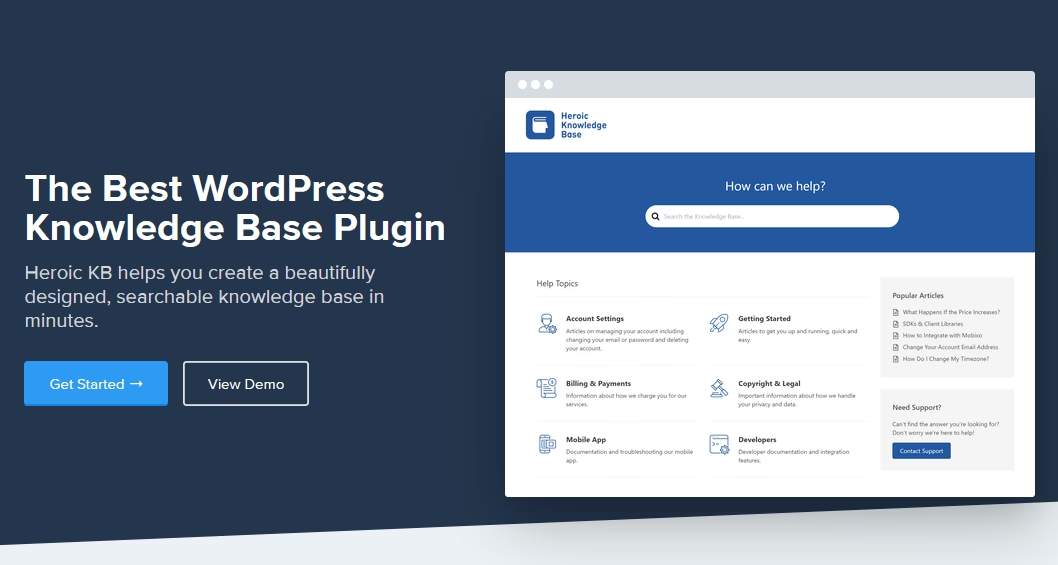
Create a WordPress website > Download and Install Heroic Knowledge Base Plugin > Activate > Import Data and done.
We also have an in-depth guide on creating a knowledge base with WordPress. Check it out to learn more!
Step 2: Enabling the Help Assistant
To enable Help Assistant: Access Heroic KB > Settings > Help Assistant > Enabled Help Assistant.
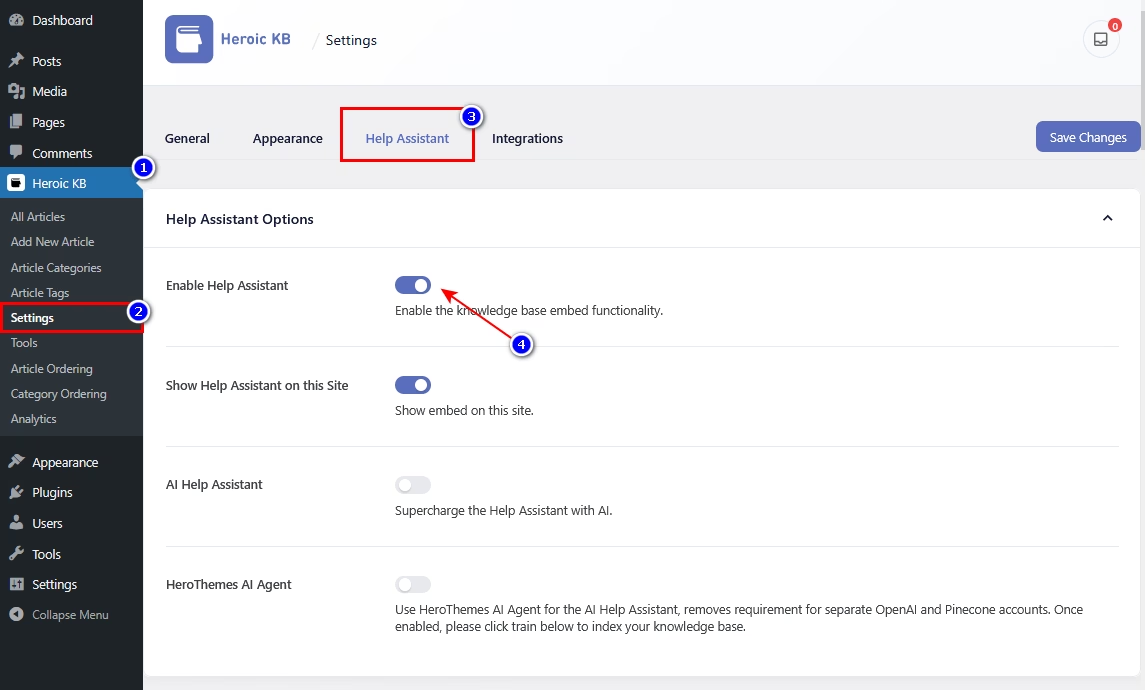
Step 3: Enabling the AI with Help Assistant
To integrate AI with your help assistant you will need OpenAI and Pinecone API keys.
To get OpenAI API key: Login to your OpenAI account > From the API Keys section you can create a new secret key.
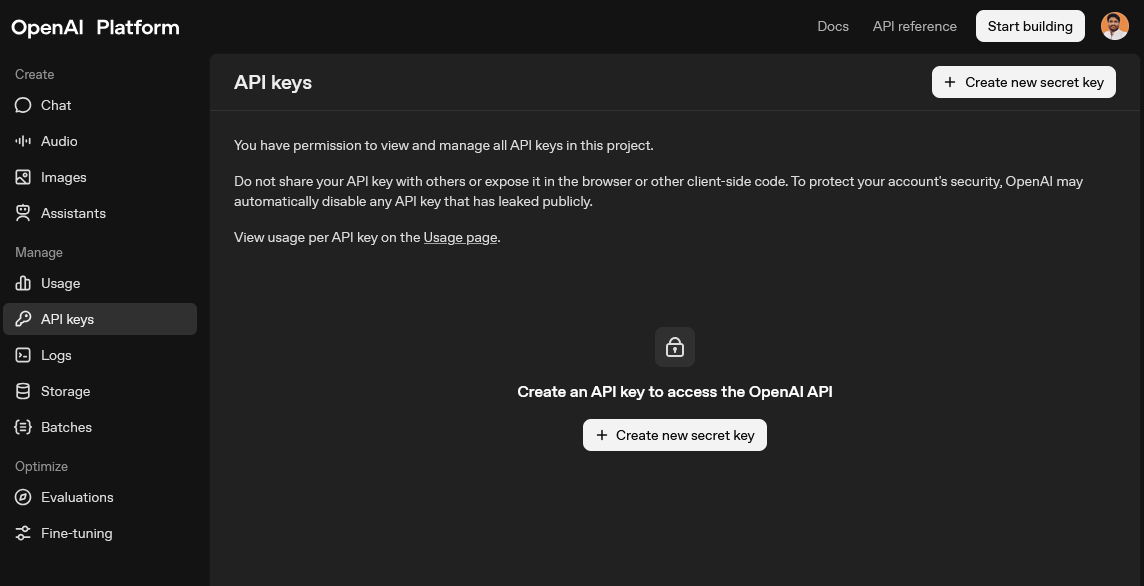
Similarly, login to the Pinecone console and create an API key.

Note these API keys down, we will need them in next steps.
Now go back to the Help Assistant Settings: Access Heroic KB > Settings > Help Assistant.
Scroll down a little bit to get AI Help Assistant Options.
Add your created API keys in the respective fields, and hit the Save Changes button.
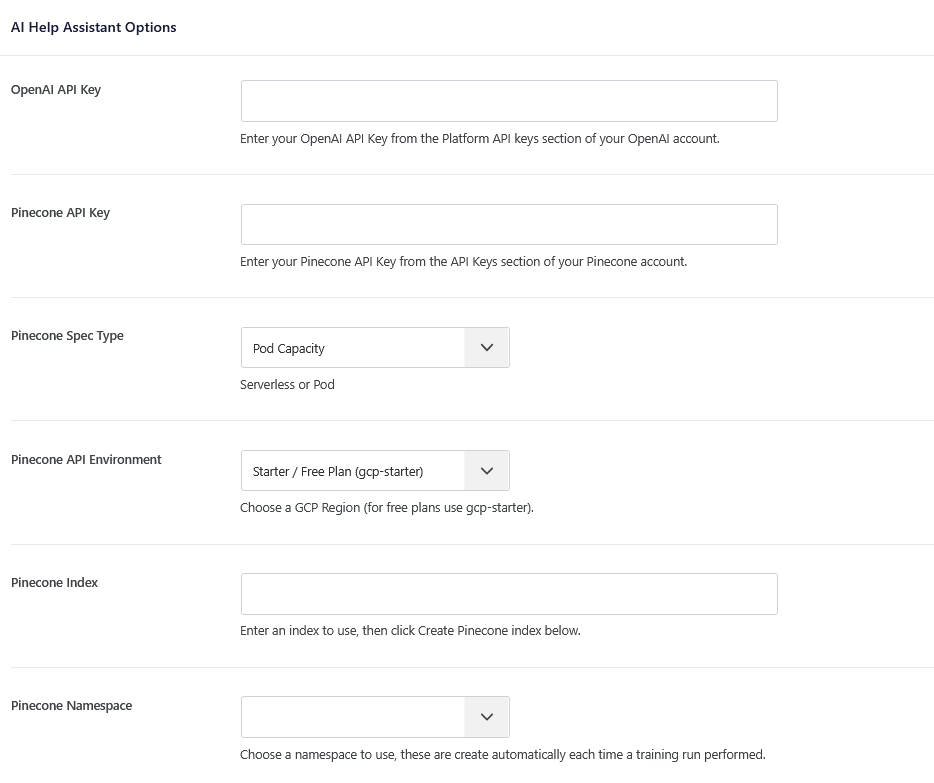
If you just scroll down a little more in the same settings page, you will find an option to train AI with your own content: “Train on this site’s Heroic Knowledge Base”.
Furthermore, an option to Test your AI Help Assistant.
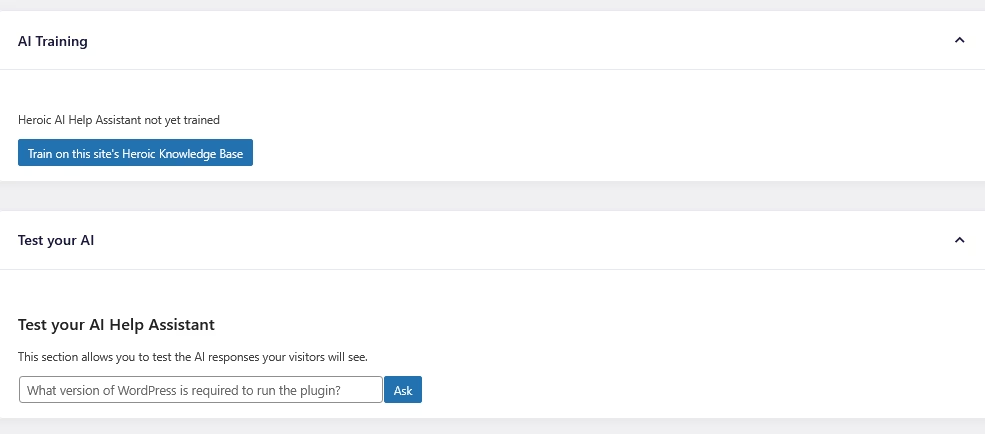
That’s it, you are done with the AI integration with your knowledge base. Now all that is left is to test your new AI integration and keep improving your knowledge base articles.
Best Practices for an AI-Powered Knowledge Base Assistant
Implementing AI tools like ChatGPT with your knowledge base can be a double-edged sword. In some cases, it improves user experience and, in some cases, just frustrates customers.
To truly make it successful, follow these best practices:
1. Keep the Content Fresh and Relevant
Regularly update your knowledge base articles to remove outdated info.
If a policy or feature changes, update the docs and re-train/re-index the AI ASAP.
When you train AI with a verified knowledge base, it gives consistent, accurate answers every time.
Even if you don’t use AI, keeping the knowledge base up to date is the most important thing to do in customer support scenarios.
2. Combine AI with Human Agents
The goal of ChatGPT integration is to augment your support, not fully replace humans.
You’ll find the best results when the AI handles common questions, and seamlessly transfers responsibility to human support for edge cases or emotional situations.
For example, suppose someone asks “Why is my account suspended?”. The bot (AI) will probably give a generic answer because it likely lacks the necessary information.
In such a situation chatting with AI is more frustrating than with a real agent. There should be easy access for customers to connect with human support.
Just a quick personal experience: I had a similar experience with Amazon when I tried to return a broken product, and it was really frustrating to talk with AI, after multiple angry attempts it connected me with human support.
So, never force AI support or dodge customer queries. It will hurt your business badly.
3. Start Small: Soft-Launch or Internal Test
If you’re unsure how customers will respond with the AI assistant (Remember the negativity around AI generated content when it was new?), or just want to be cautious, start small.
You could launch AI with a beta tag, make customer feedback easy, or start with internal integration first.
You can even invisibly use it: have it draft answers that human agents review before sending, just to gauge accuracy.
4. Be Transparent (but Not Overly so)
Never try to coat AI-generated answers as a real human answer. No one liked templated responses (people still don’t like it), and AI generated responses are almost similar.
So, make it clear that customers are getting AI generated answers. But don’t overdo it.
A simple icon or label like “AI Assistant” is fine.
Most people don’t mind as long as they get a useful answer.
5. Fine-Tune the AI’s Tone and Scope
Most integrations allow some configuration of the assistant’s behavior. Take full advantage of that.
Here are following things you can do:
- Match the tone to your brand
- You can instruct it answer only questions related to your company’s products and documentation
- Make it politely decline medical or legal advice
6. Monitor and Train Continually
At least in the early stages, monitor the AI’s conversations.
Skim AI chats and feedback to catch any mistakes or weird outputs.
If you see repeated queries on a topic that wasn’t well covered, that’s your sign to create a new article or improve an existing one.
Frequently Asked Question
Can I use ChatGPT to create my knowledge base content?
The answer is yes. AI can assist not only in answering questions from existing content, but also in generating draft articles or summarizing information to build that content in the first place.
I recommend creating the first draft using ChatGPT, and finalizing it with a documentation writer.
Final Thoughts
Integrating ChatGPT with your knowledge base, documentation, or self-service portal can transform your customer support experience for better.
You’re giving users a conversational way to get the help they need, faster than ever.
Solution like Heroic Knowledge Base’s AI Assistant makes it easy to create a knowledge base and integrate ChatGPT with it.
I was like you, skeptical of AI answers, especially when you paid to have a peace of mind, to get the help of customer support when needed. And what you get is random rubbish.
But that isn’t the case when you combine Knowledge Base + AI + Human support, and try to force AI use when a customer obviously needs human assistance.
So there you have it: everything you need to integrate ChatGPT with a knowledge base in the simplest way possible.

